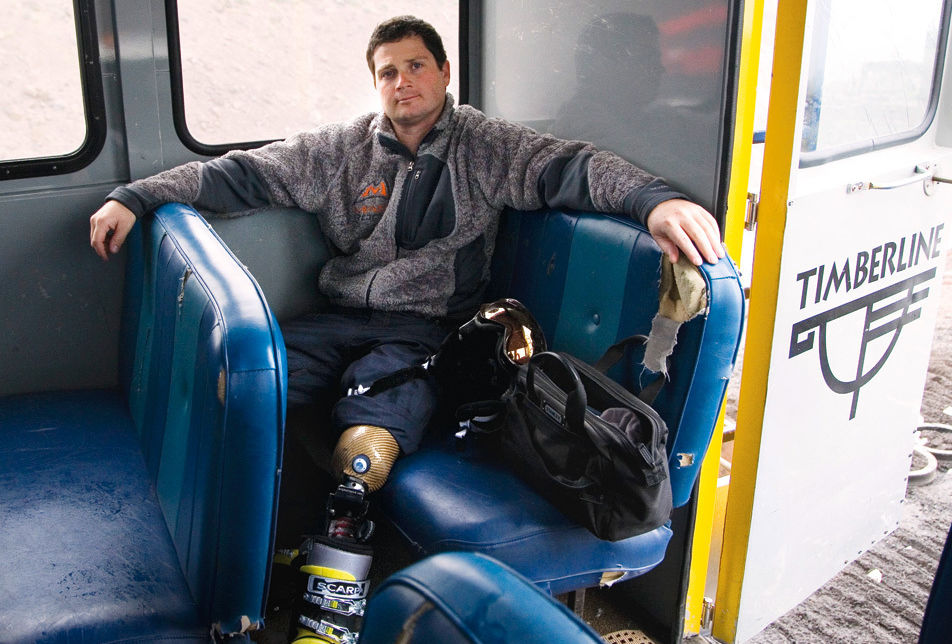Mission: Possible

Inventor Jarem Frye with his XT9, one of the only prosthetic knees that allows above-knee amputees to snowboard.
Image: Annie-Marie Musselman
Given the way former US Marine corporal Garrett Jones, 24, is hucking off the snowbanks on Timberline Resort’s Pucci Run, you wouldn’t know that he’s got only one leg beneath his camo snowboard pants. In 2007, an IED exploded directly beneath him in Iraq, taking his left leg. The Newberg native figured his winters on Timberline’s slopes were finished.
But he hadn’t yet heard about the XT9, a spring-loaded, waterproof prosthetic knee invented by Jarem Frye of Amity, Oregon. In 2006, when the XT9 arrived on the scene, the marketplace for prosthetic knees was crowded. All of the other knees, however, were engineered for walking; none allowed an amputee to hold the crouched position needed to carve down a ski run.
Frye, 32, knows well the anguish of losing a limb: afflicted with osteogenic sarcoma, his left leg was amputated above the knee at age 14. His medical team told him he’d never snowboard again. “I had the distinct feeling,” he recalls, “that if the legs they had didn’t work, I’d just build my own.”
So he did. Frye, who never went to college, talked his way into jobs at four different machine shops to learn metallurgy, welding, and computer-aided design. In 2005, he founded SymbioTechs USA and introduced the revolutionary XT9.
Most prosthetic knees swing freely, mimicking the smooth movements of the human gait, but would collapse if put through the strain of snowboarding or telemark skiing. But the XT9 features an embedded spring that absorbs and stores tension the way a quad muscle does, allowing amputees to bend and stand as they carve.
Three years on, orders are brisk enough to allow Frye to move his business out of his living room and into a McMinnville office. Adaptive athletes say the latest version of the XT9 is pushing the boundaries of above-knee amputees’ performance in action sports. It has put Iraq war vets like Jones back on the slopes, and it has enabled athletes like former elite teleskier E.J. Poplawski—who lost his leg in a horrific man-versus-tree collision at the 2006 US Telemark Extreme Freeskiing Championships—to compete again. In January, Poplawski raced in the X-Games’ first-ever SnoCross for adaptive athletes.
“I can’t hit 50- or 60-[foot jumps] the way I used to,” he says. “But with the XT9, on a few powder days, I’ve hit 15 or 20.”
Buoyed by stories like these, Frye hopes to expand SymbioTechs’ product line this year. The specifics are top secret, but Frye says he’s developing sport-specific prosthetic components that will let amputees perform at an even higher level. The real promise of the XT9, Frye argues, isn’t what it does for the amputee’s body, but how it might change amputee culture itself: “‘Impossible’ is not part of my vocabulary.”



